Tate Modern is the jewel in the crown of modern art galleries in London. It holds the nation’s collection of modern art from 1900 to the present day. With 5.7 million visitors it is in the top ten most visited museums and galleries in the world. The collection holds masterpieces of international and British modern art. From Picasso’s “The Three Dancers”, to Dali’s “Autumnal Canibbalism”, to Rothko’s “The Seagram Murals”, to Duschamp’s “Fountain”, to Parreno’s “Anywhen”, Tate Modern is a one stop shop for modern art lovers.
Tate Modern has an innovative way of displaying artwork, according to themes and not chronology. 21st Century art can be seen next works from the early 20th century as long as it is in keeping the theme. This makes for frequent changes of displays and it is difficult to guarantee that certain artworks will be available at the time of visit. The themes change from time to time too.
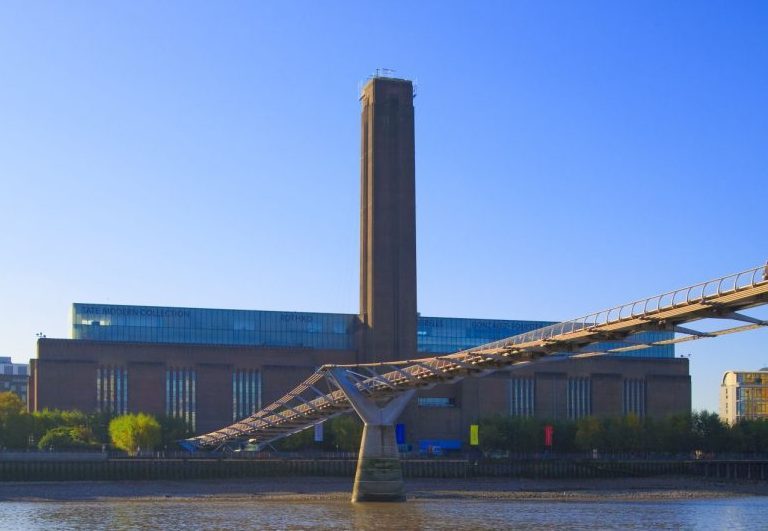 The Tate Modern and the Millennium Bridge over the River Thames. Photo Credit: ©London & Partners.
The Tate Modern and the Millennium Bridge over the River Thames. Photo Credit: ©London & Partners.
1. Boiler House: Tate Modern is housed in the former Bankside Power Station. The building is almost the same size as Westminster Abbey with the signature central chimney standing at 99m tall. The building was converted and opened to the public in 2000.
2. The Architects: The architect of the power station was Giles Gilbert Scott. He is famous in the UK for having designed the iconic red telephone boxes. The conversion architects are the Swiss Herzog and de Meuron. They are famous the world over for building the Beijing National Stadium or “Bird’s Nest”.
3. The Switch House: In June 2017 the Switch House, a twisting, angular extension, was opened to the public. Much awaited, the new extension has extended the gallery’s space by 60%.
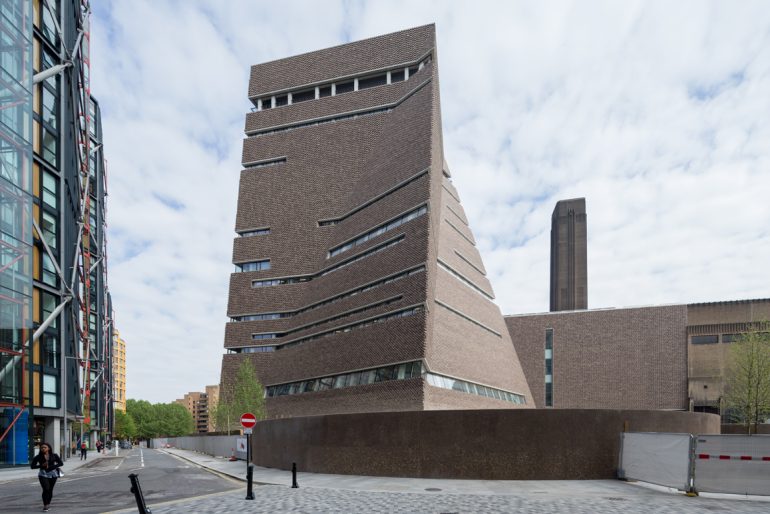 Tate Modern: Switch House. Photo Credit: © Iwan Baan via Tate Modern.
Tate Modern: Switch House. Photo Credit: © Iwan Baan via Tate Modern.
4. The Turbine Hall: At 26m high, this vast space was where the turbines of the power station were located. Since opening in 2000, over 60 million visitors have experienced large-scale artworks in the awe-inspiring space of the Turbine Hall. A time capsule has been buried in the Turbine Hall.
5. The View: The top floor of the Switch House is a viewing terrace with spectacular vistas over the London skyline and can be accessed free of charge! The view of the dome of St Paul’s Cathedral is particularly impressive.
6. The Collection: to visit the main collection of Tate Modern is admission-free. There are 8 areas that make up the main collection displays. In contrast to most galleries and museums, the displays at Tate Modern are arranged according to themes and not chronology. Tate Modern prides itself on the frequent change of displays. The themes change too!
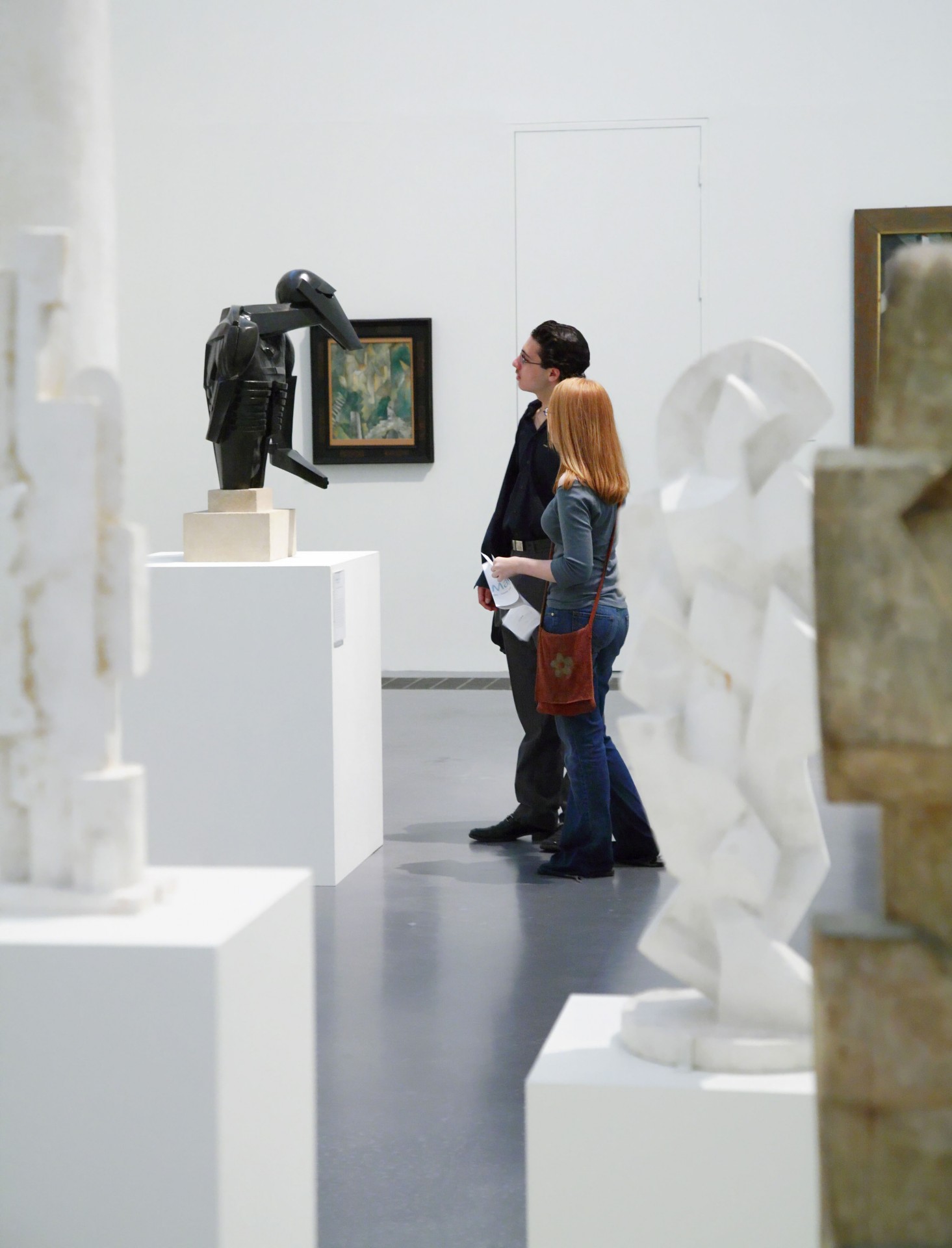 Tate Modern: Couple looking at sculptures in one of the galleries. Photo Credit: ©London & Partners.
Tate Modern: Couple looking at sculptures in one of the galleries. Photo Credit: ©London & Partners.
7. Artists in Dialogue: in each of the main collections works by different generations of artists are brought together. This way the gallery offers the opportunity to experience this ongoing dialogue between past and present. One of the famous “conversations” is the display of Claude Monet’s “Water-Lilies” next to Mark Rothko’s “Untitled”, both artists expressing in their work, their fascination with light.
8. Other Tate Galleries: Tate Modern is one in a family of four other galleries around the UK. The first one, the National Gallery of British Art, opened in 1896 and is now known as Tate Britain. But there is also Tate Liverpool and Tate St Ives in Cornwall.
9. Henry Tate: it is due to sugar and philanthropy that the Tate Galleries exist. Henry Tate, a 19th C sugar merchant from Liverpool, donated his collection of contemporary paintings and £80,000 to the government. He also introduced sugar cubes to the United Kingdom. Tate & Lyle sugar cubes are stocked in any supermarket.
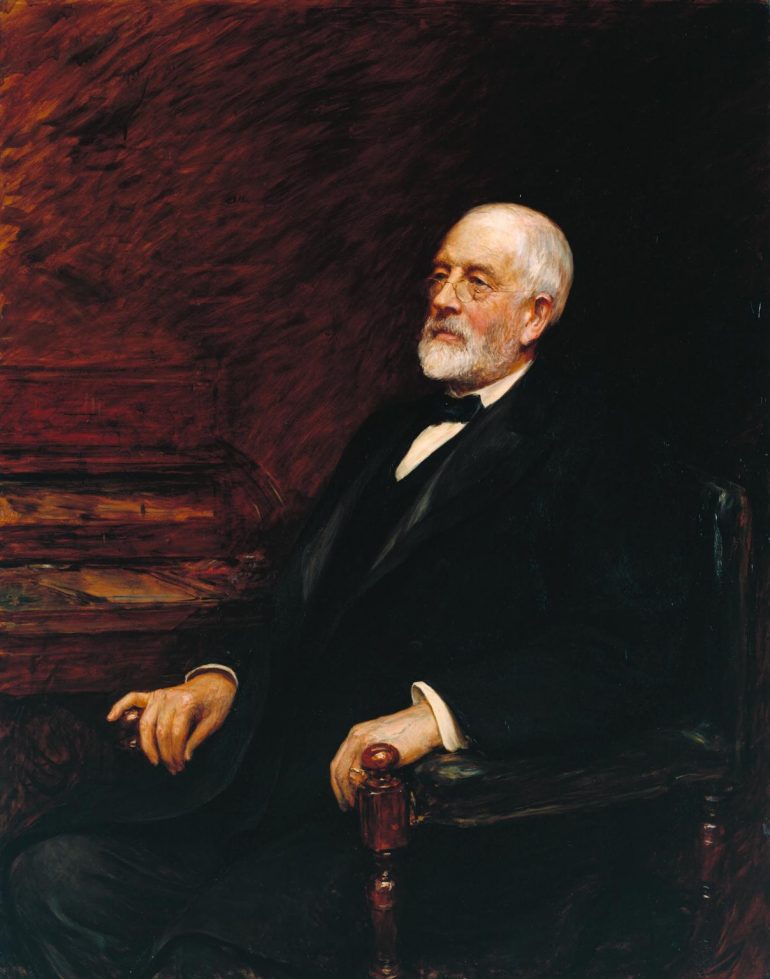 Portrait of Sir Henry Tate 1897 by Sir Hubert Von Herkomer 1849-1914 Bequeathed by Amy, Lady Tate 1920. Photo Credit: © Tate Modern.
Portrait of Sir Henry Tate 1897 by Sir Hubert Von Herkomer 1849-1914 Bequeathed by Amy, Lady Tate 1920. Photo Credit: © Tate Modern.
10. The Bookshop: The Tate Modern Bookshop in the Turbine Hall is one of the best art bookshops in London. Not only it is stocked with copies of past exhibition catalogs but it has a great range of illustrated children’s books and Tate Publishing is a leader in the visual arts. Great ideas for gifts and mementos too!
Visiting Tate Modern to view some of the world’s best contemporary art, to enjoy viewing from the top of the Switch House, or just to buy at the bookshop is one of the great experiences to be had in London. Displays and themes change and are forever updated making the gallery always fresh and challenging. Blue Badge Tourist Guides are constantly updated on the changes of displays and with their expertise will enhance your visit.



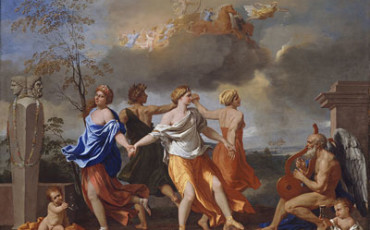
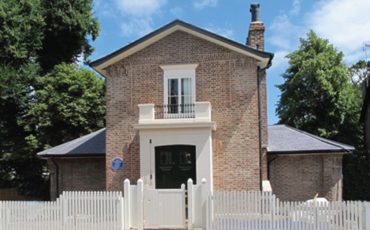


Leave a Reply